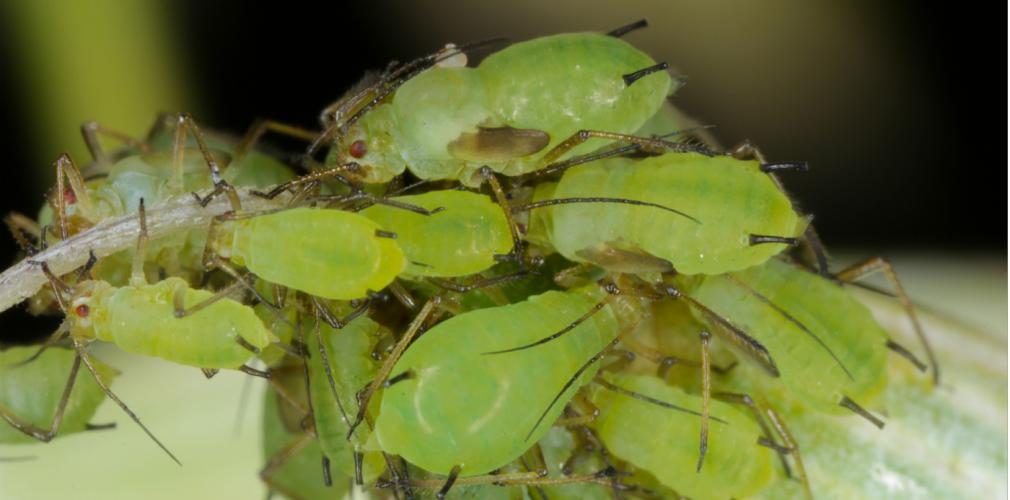They’re tiny, they move very fast and they act as vectors of plant viruses. Do not underestimate them for they can ruin an entire cannabis crop in the blink of an eye. Keeping an eye on them is indeed highly advisable, however, before you panic, we recommend having a look at the following post because it’ll show you how to prevent or get rid of them should they’ve already come on the scene. Let’s get started.

What are aphids
Aphids are small insects, 1-3 mm tops, that are still perceptible to the human eye. They can be of many different colors, ranging from green to pink, although the majority of them are rather blackish or greyish. Most aphids have no wings, but those who do, have wings 4 times the size of their bodies. They reproduce very quickly, so much so that each female releases between 3 and 100 larvae every day.
One very important aspect about aphids, which makes them particularly dangerous, is that they can vector bacterial and viral diseases. In fact, very few insects can transfer as many viruses as these can. And, as if that were not enough, a devastating fungus known as scooty mold grows from their secretion. What can we do to prevent aphids, and the fungal infections and insects that come along with them, from attacking our plants? For starters, always use natural insecticides. Neem oil, potassium soap, nettle spray, and ponytail can help us control any kind of plague. Let's take a deeper dive into the best way to prevent them, though.
How to prevent aphids
The most effective way to prevent them from infesting our grow is to make sure we do not create the atmosphere they love to live in. Warm, dry and highly fertilized settings are particularly favorable for the appearance of aphids, so let's play smart: avoid raising the temperature in excess, overusing fertilizers or interrupting the watering for long periods of time.
And of course, and this is also applicable to all kinds of plagues however different they may be, the best form to prevent infection is to keep the grow space spotlessly clean. In other words: remove all rotten leaves, change clothes before getting in and sanitize each and every one of the tools you use (scissors, watering can, stakes, pipettes…).
How to identify aphids
To spot them, the first thing is to know where to look for them. They are generally found on the back side of the leaves, on the stalks and, during the vegging period, along the branches too. Despite their size, they are easy to spot for they live in large groups.
Below are some of the signs to confirm the attack of aphids:
- Ill-looking leaves: yellowish, withered and dry.
- Molasses in some parts of the plant, produced by the secretion of these parasites. This is a very important aspect for it generally causes the appearance of sooty mold, meaning after aphids this hateful fungus could hit our plants.
- Ants: these little insects feed on their molasses. In exchange, they protect aphids from other predators. It is basically a symbiotic relationship. Therefore, if you see ants, it may be because aphids are near as well.
How to get rid of aphids
The fastest and easiest way to get rid of aphids is manually: when you see one, remove it with your fingers. We recommend doing so using gloves, to maintain a clean environment, without contaminating the affected area. Alternatively, we can introduce natural predatory species such as ladybugs, parasitic wasps, lacewing flies or the fungi Verticillium lecanii. They just love eating them. So releasing some of these little insects in our grow could be the most effective, though less rapid, way to get rid of aphids.





Give us your feedback
Your rating (between 1 and 5)
1 2 3 4 5Leave a comment